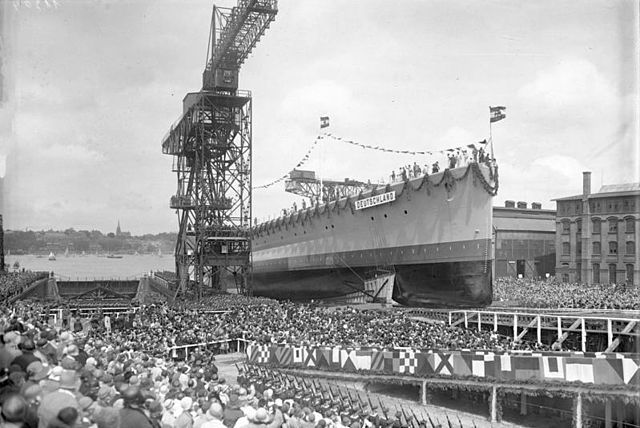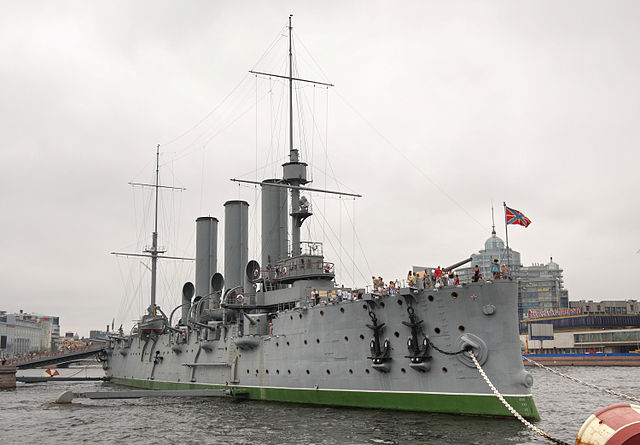Deutschland-class cruiser
The Deutschland class was a series of three Panzerschiffe, a form of heavily armed cruiser, built by the Reichsmarine officially in accordance with restrictions imposed by the Treaty of Versailles. The ships of the class, Deutschland, Admiral Scheer, and Admiral Graf Spee, were all stated to displace 10,000 long tons (10,160 t) in accordance with the Treaty, though they actually displaced 10,600 to 12,340 long tons at standard displacement. The design for the ships incorporated several radical innovations, including the first major use of welding in a warship and all-diesel propulsion. Due to their heavy armament of six 28 cm (11 in) guns and lighter weight, the British began referring to the vessels as "pocket battleships". The Deutschland-class ships were initially classified as Panzerschiffe, but the Kriegsmarine reclassified them as heavy cruisers in February 1940.
Admiral Scheer at Gibraltar in 1936
Recognition drawing of Lützow as she appeared in 1942. It indicates that the armoured belt is 4 inches thick, instead of its actual 3.1 inches.
Lützow's rear gun turret
Deutschland at her launching
A cruiser is a type of warship. Modern cruisers are generally the largest ships in a fleet after aircraft carriers and amphibious assault ships, and can usually perform several operational roles from search-and-destroy to ocean escort to sea denial.
US Navy's Virginia-class cruiser USS Arkansas. The Virginia class was the last class of nuclear-powered cruisers in the US.
Russian Slava-class cruiser Marshal Ustinov
Marco Polo, the Royal Italian Navy's first armored cruiser
The Russian protected cruiser Aurora








